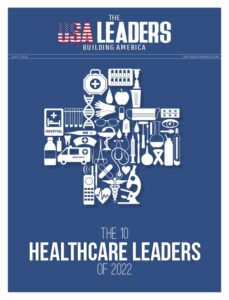Do you know? 72% of employees participating in Accelerated Development Program reported higher job satisfaction and a stronger commitment to their organization.
This survey underscores the growing importance of Accelerated Development Program in enhancing employee engagement, reducing turnover, and fostering career growth. It also highlights some of the common challenges organizations face in implementing these programs effectively.
What is an Accelerated Development Program (ADP)?
An Accelerated Development Program (ADP) is a structured initiative designed to rapidly enhance the skills, knowledge, and capabilities of individuals or teams. These programs are typically intensive, time-bound, and focused on achieving significant professional or personal growth in a condensed timeframe.
Purpose:
The primary aim of an ADP is to fast-track development and prepare participants for advanced roles or responsibilities, often in leadership, management, or specialized fields.
Goals:
- Equip participants with advanced skills and knowledge.
- Prepare individuals for higher-level positions and responsibilities.
- Drive organizational growth through rapid upskilling and talent development.
Benefits:
- For the Organization:
- Accelerates the readiness of employees for critical roles.
- Bring fresh perspectives and advanced skills to the organization.
- Prepares future leaders more quickly, supporting succession planning.
- For the Employee:
- Provides accelerated opportunities for career progression and skill development.
- Facilitates connections with mentors, industry experts, and peers.
- Rapidly builds competencies that are valuable for career growth.
Understanding Accelerated Development Program (ADPs)
Types of Accelerated Development Program
- Rotational Programs
Need: Many companies use rotational programs as a strategic talent pipeline, identifying top performers early for future leadership roles. It’s a high-stakes game of talent acquisition and development, often leading to accelerated career progression for those who excel.
Example: Google’s Rotational Programs
Google is known for its rigorous hiring process. It offers various rotational programs for engineers, product managers, and other roles. These programs provide participants with exposure to different teams and projects, fostering innovation and leadership skills.
The Associate Product Manager (APM) Program is designed to develop future product leaders. APMs typically undergo two one-year rotations in different product areas.
Advantage: Provides broad experience and insight into various functions, helping identify where employees fit best.
Disadvantage: Can be challenging to manage and may lead to a lack of depth in any single role.
- Project-Based Programs
Need: Employees work on specific projects that are crucial to the organization. These programs provide hands-on experience, allowing participants to apply theoretical knowledge to real-world challenges. Project-based learning often simulates the fast-paced nature of professional work, encouraging rapid learning and adaptation.
Example: Edutopia
While primarily focused on education, Edutopia offers valuable insights into project-based learning methodologies and their impact on student development.
Advantage: Allows employees to focus on achieving tangible results and applying their skills to real problems.
Disadvantage: May have a limited scope, with less exposure to different roles or functions.
- Leadership Development Programs
Need: Focuses on preparing employees for leadership roles through training and practical experiences. These programs identify and develop high-potential employees to fill leadership roles as current leaders retire or move on.
Example: GE’s Crotonville Leadership Development Center
General Electric’s Crotonville Leadership Development Center is a renowned example of a leadership development program that has accelerated the careers of countless leaders. The program offers a comprehensive curriculum, including classroom instruction, simulations, and real-world projects, to develop future leaders.
Advantage: Directly prepares employees for management positions, often with a focus on strategic thinking and team leadership.
Disadvantage: May be too specialized for employees not interested in leadership roles.
Key Components of an Accelerated Devvelopment Program
- Mentorship and Coaching
Mentorship and coaching are pivotal in accelerating development. They offer personalized guidance, support, and feedback, fostering growth and confidence.
Purpose: They assist individuals in navigating their development, setting goals, and overcoming challenges.
Research: Studies have demonstrated that mentorship positively impacts employee engagement, job satisfaction, and career advancement.
A 2023 study published in the Journal of Organizational Behavior found that employees engaged in mentoring relationships experienced higher levels of engagement. Mentorship provides a sense of connection and support, enhancing employees’ commitment and involvement in their work.
- On-the-Job Training and Experiential Learning
Learning by doing involves tackling real tasks and responsibilities. Practical experience is invaluable for skill development and application. On-the-job training and experiential learning offer opportunities to learn by doing and solve real-world challenges.
Purpose: It provides practical experience and immediate application of skills.
Research: Research indicates that experiential learning enhances problem-solving, critical thinking, and decision-making skills.
A study showed that 71% of employees with mentors reported their company provided good opportunities for career advancement, compared to only 47% of those without mentors.
Additionally, 94% of employees stated they would stay longer at a company offering learning and growth opportunities, highlighting the role of mentorship in employee retention.
- Formal Coursework and Certifications
Structured learning through formal coursework and certifications provides a robust foundation of knowledge and skills.
Purpose: It offers formal education and recognized qualifications.
Research: Studies have shown that formal training can improve employee performance and job satisfaction.
As a leading HR association, SHRM provides insights into workplace trends, including training and development.
Benefits of accelerated development program
- Career Advancement Opportunities
ADPs provide employees with a structured and accelerated pathway to higher roles and responsibilities within the organization. These programs are designed to fast-track the careers of high-potential employees by equipping them with the skills to excel in leadership positions.
Impact: Employees can significantly shorten the time it takes to achieve career milestones by participating in these programs. This rapid progression not only accelerates career growth but also enhances job satisfaction.
- Skill Development and Knowledge Acquisition
ADPs are focused on the development of essential skills and the acquisition of relevant knowledge at an accelerated speed. These programs often include a mix of classroom training, on-the-job experiences, mentoring, and coaching to ensure complete development.
Impact: The accelerated nature of these programs means that employees quickly become more competent and confident in their roles. This rapid skill enhancement enables them to handle more complex tasks and responsibilities sooner than their peers who are not part of an ADP.
- Increased Employee Engagement and Retention
This step helps keep employees motivated. Investment in employees also represents the company’s commitment to their growth and development. Employees who feel valued and supported are more likely to be loyal and less likely to seek opportunities elsewhere.
Impact: Higher levels of employee engagement are a result of ADP’s natural focus on professional and personal growth. Employees who are engaged at work are more inventive, committed, and productive. Additionally, investing in staff development through ADPs can lower turnover rates dramatically, resulting in a team that is more dependable and devoted.
The Accelerated Development Program Process:
The Accelerated Development Program (ADP) is a structured approach designed to rapidly cultivate and enhance the skills of high-potential employees or leaders. Here’s a breakdown of the process:
- Recruitment and Selection
To expedite the development of high-potential employees, we will identify suitable candidates through a rigorous selection process. This process involves assessing talent, reviewing performance records, and considering recommendations from senior leadership.
We will evaluate cognitive abilities and problem-solving skills using aptitude tests and case studies. Candidates must demonstrate the potential to assume greater responsibilities and will be selected based on their overall performance.
- Program Design and Development
The program will be meticulously designed to align with organizational objectives and provide a comprehensive learning path. Participants will acquire both theoretical knowledge and practical skills essential for their roles.
We will establish clear learning outcomes, such as enhanced leadership and technical proficiency. To enrich the program, we will collaborate with industry experts to deliver workshops, seminars, and online courses.
- Program Implementation
Participants will receive a thorough orientation to the program’s structure, expectations, and support resources. Opportunities for hands-on projects and cross-functional assignments will be provided to broaden their perspectives.
We will offer continuous progress assessment and feedback through regular check-ins. Mentorship and coaching will be available to address challenges and foster growth.
- Evaluation and Improvement
We will measure program effectiveness by participant development, attainment of learning objectives, and overall organizational impact. Feedback from participants and managers will be collected to identify areas for improvement.
Data-driven insights will inform program refinements to better meet the evolving needs of future participants and achieve desired outcomes.
This structured approach ensures that the Accelerated Development Program effectively cultivates high-potential talent while strategically aligning with organizational goals.
Challenges and Best Practices of Accelerated Development Program
- Balancing Workload with Learning Opportunities
Challenge: It is essential to ensure that participants can manage their regular work responsibilities while fully engaging in the development program.
Solution: Implement a structured schedule with designated training times and adjust workloads. Communicate with managers to ensure participants have a manageable workload during training periods.
Example: At a global consulting firm, participants in an Accelerated Development Program (ADP) are expected to handle client projects while attending intensive leadership training. This dual demand often leads to burnout or reduced effectiveness in either the training or their client’s work. To address this, the company implemented a structured schedule that allocates specific times for training, with managers ensuring that participants’ workloads are adjusted accordingly during these periods.
Key Takeaway:
Effective scheduling and workload management are crucial to ensure participants can fully engage in both their work responsibilities and development activities.
Clear communication with managers helps to prevent burnout and optimize learning outcomes.
- Ensuring Program Quality and Consistency
Challenge: Maintaining high standards and a consistent experience across different locations.
Solution: Standardize the core curriculum and training materials across all locations. Train local facilitators to deliver consistent content and regularly review the program for updates and quality assurance.
Example: A multinational technology company runs its accelerated development program across several countries. Variations in local training providers and cultural differences led to inconsistent program delivery and varying quality. To tackle this, the company standardized the core curriculum and trained local facilitators to ensure uniformity. They also implemented regular reviews and updates to maintain the program’s quality.
Key Takeaway:
Standardizing core elements of the program and training facilitators uniformly helps maintain high-quality and consistent experiences across different locations.
Regular reviews and updates are essential for sustaining program effectiveness.
- Measuring the ROI of the accelerated development program
Challenge: Demonstrating the tangible benefits of the program and justifying the investment.
Solution: Define clear metrics for success, such as promotion rates, retention, and performance improvements. Track these metrics before, during, and after the program to assess its impact and demonstrate value.
Example: An international financial services firm introduced an Accelerated Development Program (ADP) aimed at accelerating the development of high-potential employees. Initially, measuring ROI was challenging due to a lack of clear metrics. To address this, the firm began tracking specific performance indicators such as promotion rates, retention rates, and project success metrics. They conducted assessments before and after the program to evaluate participant growth and correlate the results with business outcomes.
Key Takeaway:
Defining and tracking specific performance metrics allows organizations to demonstrate the value of their Accelerated Development Program.
Clear metrics, such as promotion rates and performance improvements, provide tangible evidence of the program’s impact.
- Best Practises for Accelerated Development Program Success:
- Clear Program Goals and Expectations:
Set SMART goals aligned with organizational objectives. Communicate program details and expectations clearly to participants.
- Supportive Organizational Culture:
Promote a learning-oriented culture that values development. Ensure an inclusive environment and maintain open communication.
- Strong Mentorship and Coaching:
Pair participants with experienced mentors and provide regular coaching. Facilitate networking opportunities for broader engagement.
Conclusion
Accelerated Development Programs (ADPs) offer a fast-track route for skill enhancement and career growth, benefiting employees and organizations. By investing in ADPs, companies can quickly prepare future leaders while employees gain valuable skills and career advancement opportunities.
As the business landscape continues to evolve, ADPs can provide a competitive edge, fostering a culture of continuous improvement and innovation. Embracing these programs not only supports the growth of future leaders but also contributes to the overall growth and sustainability of the organization.
We hope you implement the standardized procedure in your career to upgrade yourself. Whether you’re a manager looking to implement an ADP or an individual seeking rapid career advancement, understanding and leveraging the full potential of Accelerated Development Programs can set you on a path to success.
Also Read: 10 Programming Languages to learn and to scale your skills





















